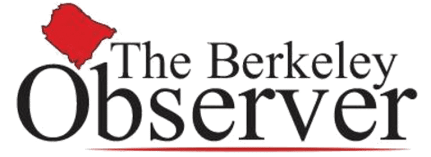
BERKELEY COUNTY, S.C. – Berkeley County wants to know how residents think it should spend $44 million in federal funds as part of the American Rescue Plan Act.
On March 11, 2021, President Joe Biden signed the American Rescue Plan Act of 2021 (H.R. 1319) into law. The $1.9 trillion package is intended to combat the COVID-19 pandemic, including the public health and economic impacts.
This act includes direct funding to local municipalities nationwide, including Berkeley County, which received $44,268,263 (50% in May 2021 and the remaining 50% to be paid in 2022).
The federal funds can be used in the following ways:
COVID-19 Response
Vaccination Programs
Medical care
Testing
Contact tracing
Isolation and Quarantine
Medical or public health access for vulnerable populations
Public health surveillance
Health care capacity enhancement
Capital investments in mitigation tactics in public facilities
Personal protective equipment (PPE) purchases
Prevention and mitigation in congregate living facilities and schools
Ventilation improvements in congregate and health care settings
Public health data system enhancements
Behavioral Health
Mental health treatment
Substance misuse treatment
Crisis intervention
Outreach to promote access to health and social services
Payroll
Public health, health care, human services, public safety, and others who work on COVID-19 response
Payroll and benefit costs for employees or units/divisions primary dedicated to COVID-19 response
Households
Food assistance, rent, mortgage, utilities
Counseling and legal aid to prevent eviction or homelessness
Cash assistance
Burial assistance
Survivor’s benefits
Home repairs and weatherization
Internet access or digital literary assistance
Job training to address negative economic or public health impacts
Public Sector
Rehiring public sector staff up to pre-pandemic levels
Replenishing unemployment insurance (UI) trust funds up to pre-pandemic levels
Building internal capacity to implement economic relief programs, with investments in data analysis, targeted outreach, technology infrastructure, and impact evaluations
Hardest-hit Communities
Limited to spending within a Qualified Census Tract, families living in Qualified Census Tracts, other populations, households, or geographic areas disproportionately impacted by the pandemic
Community health workers, public benefits navigators, remediation of lead hazards, and community violence intervention programs
Services to address individuals experiencing homelessness, affordable housing development, housing vouchers, and residential counseling and housing navigation assistance to facilitate moves to neighborhoods with high economic opportunity
New or expanded early learning services, additional resources for high-poverty school districts, educational services like tutoring or afterschool programs and services to address social emotional and mental health needs
New or expanded high quality child care, home visiting programs for families with young children, and enhanced services for child welfare-involved families and foster youth
Small Businesses & Nonprofits
Loans or grants to mitigate revenue declines, closures (e.g., payroll and benefits support, employee retention, mortgage, rent, utilities, other operating costs)
Loans, grants or in-kind assistance to implement prevention or mitigation tactics (e.g., social distancing, enhanced cleaning, barriers, or partitions, vaccination, testing, contact tracing)
Technical assistance, counseling, or other services to assist business planning
Support for tourism, travel, and hospitality sectors
Providing premium pay for essential workers
Any work preformed by an employee of the state, local, or tribal government
Staff at nursing homes, hospitals, and home-care settings
Workers at farms, food production facilities, grocery stores, and restaurants
Janitors and sanitation workers
Public health and safety staff
Truck drivers, transit staff, and warehouse workers
Child care workers, educators, and school staff
Social service and human services staff
Retrospective and prospective premium pay permissible
Staff working for third-party contractors in eligible sectors
Investing in water, sewer, and broadband infrastructure
Drinking water infrastructure projects, such as building or upgrading facilities and transmission, distribution, and storage systems, including the replacement of lead service lines
Waster water infrastructure projects, including constructing publicly-owned treatment infrastructure, managing and treating stormwater or subsurface drainage water, facilitating water reuse, and securing publicly-owned treatment works
Projects that address the impacts of climate change
Aligns eligible projects with the Clean Water State Revolving Fund and Drinking Water State Revolving Fund
Encourages projects to use strong labor standards, including project labor agreements and community benefits agreements that offer wages at or above the prevailing rate and include local hire provisions
BROADBAND INFRASTRUCTURE
Investments in areas that are currently unserved or underserved (i.e., lacking a wireline connection that reliably delivers minimum speeds of 25Mbps download and 3Mbps upload)
Prioritize projects that achieve last-mile connections to households and businesses
Projects that deliver services offering reliable 100Mbps download and 100 Mbps upload speeds, unless impracticable due to topography, geography, or cost
Fiber optic investments
Replacing lost public sector revenue
Broad latitude to support government services, up to the amount of the lost revenue
Includes revenue from taxes, current charges, and miscellaneous general revenue
Calculated at four points in time: December 31 2020; December 31, 2021; December 31, 2022; and December 31, 2020
Upon receiving payments, recipients may immediately calculate revenue loss for the period ending December 31, 2020
Excludes refunds and other correcting transactions, proceeds from issuance of debt or the sale of investments, agency or private trust transactions, and revenue generated by utilities and insurance trusts
Includes intergovernmental transfers between state and local governments, but excludes transfers from the federal government
Recipients must calculate revenue on an entity-wide basis rather than a source-by-source basis
Includes current charges that would be included in the Census Bureau’s definition of stat or local government general revenue from own sources, such as revenue of facilities operated by a government (swimming pools, recreational marinas and piers, golf courses, skating rinks, museums, zoos, etc.); auxiliary facilities in public recreation areas (camping areas, refreshment stands, gift shops, etc.); lease or use fees from stadiums, auditoriums, and community and convention centers; and rentals from concessions at such facilities
Berkeley County residents with a valid address are encouraged to fill out a short survey on how the money should be spent. Click on this link to be taken to the survey. It takes approximately 10 minutes or less to complete.





















Recent Comments